The Radeon RX 550 is actually the only one of AMD's now-launched graphics cards to be truly new and runs internally as Polaris 12. It is clearly aimed at the entry-level range for less than 100 euros, occupying a market niche in which Nvidia cannot currently offer any more modern cards. It is the direct successor to the Radeon R7 250, which is still based on the Oland chip, and competes with Intel's integrated graphics, in addition to the in-house APUs. Easy game? We'll see.
Polaris 12 "Lexa" briefly introduced
The change from GCN Gen 1 to GCN Gen 4 brings not only clear performance advantages but also the jump from 28 nm planar to 14 nm FinFET (14LPP), which should also be reflected in an even greater efficiency. Let's look at the following schemes and look for the difference, because Polaris 12 offers up to 640 shaders, which are combined into a total of 10 compute units (CU), as well as two shader engines. Polaris 11, on the other hand, has 16 CUs in 2 engines. Thus, as with Polaris 11, there is the possibility to work two primitives per bar.
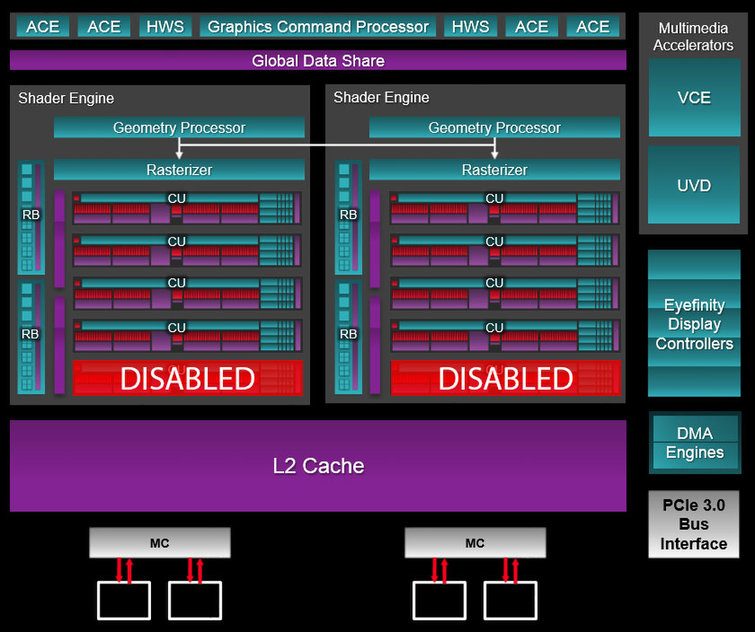
However, the Radeon RX 550 has only 8 of these CU and consequently only 512 shaders, as well as 32 texture units (right). The back end of the chip is more generous, with the 16 ROPs, the 128-bit memory bus and the 7Gb/s GDDR5 memory capable of moving up to 112GB/s. However, while Polaris 11 comes with a 1MB L2 cache, Polaris 12 has only 512KB left.
According to AMD's reference specifications, these 512 shaders should be able to clock at a maximum of 1,183 MHz, but AMD specifies the base clock clock at 1100 MHz. this is enough for approx. 1.2 TFLOPS and thus results in a decent increase compared to the Radeon R7 250, even if the homepage is still written in the text of 1.7 TFlops. The stated power consumption drops from 60 to 50 watts, which we will investigate in more detail later. With the 128-bit wide memory interface, a total of four modules are connected, which, depending on the design of the board partners, have a memory expansion of two or more. four GByte.
Who will now be served with the full expansion, AMD still leaves open. Exactly this cannot be understood (and approved) from the end customer's point of view, especially since the confusion of names could lead to irritation, as with the RX 460.
We also want to mention that with GCN Gen 4 also new video codecs and the better video engine are introduced, so that e.g. HEVC and connectivity with the DisplayPort 1.4 and HDMI 2.0 is also significantly increasing. Which brings us back to the HTPC.
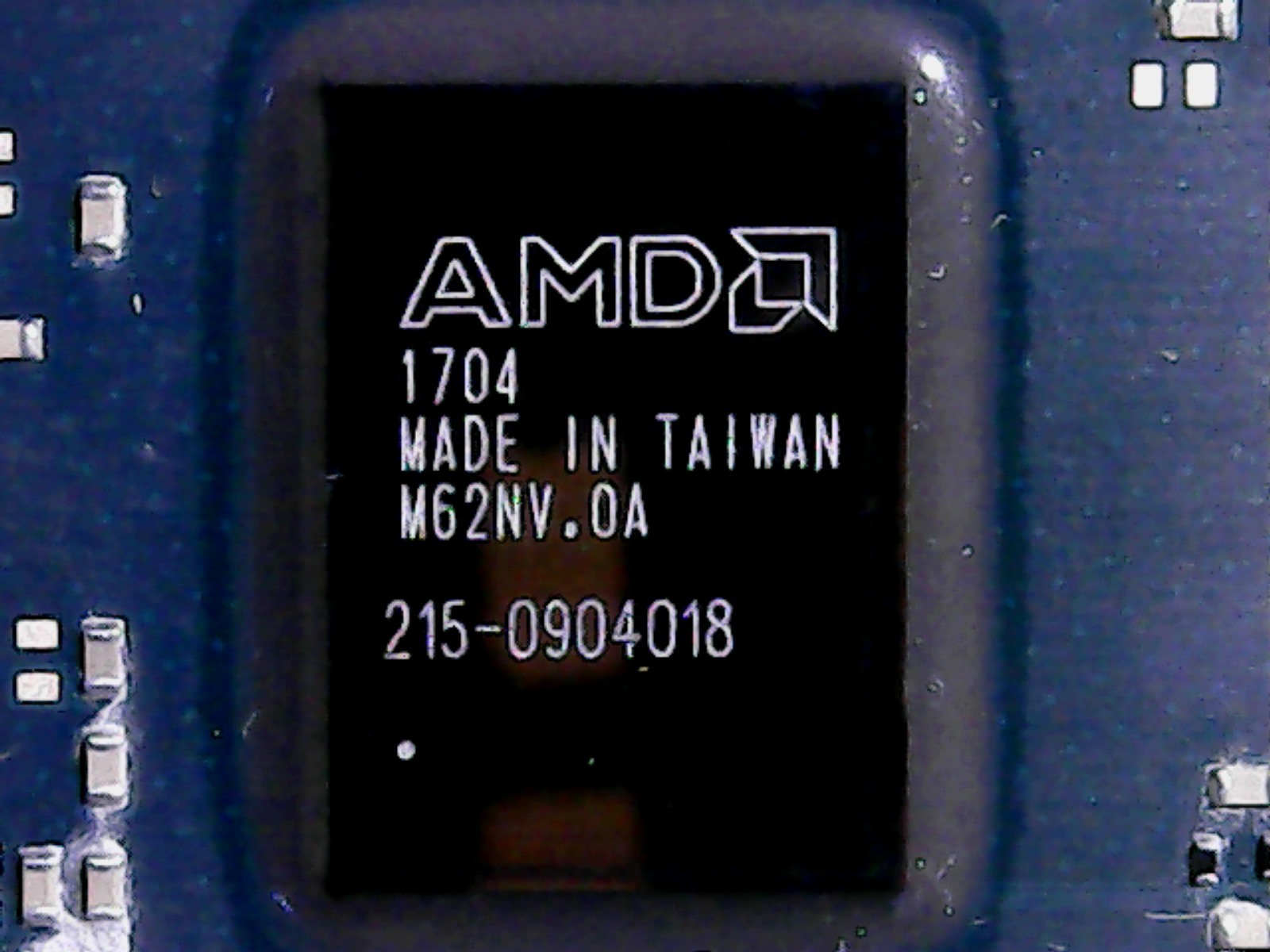
With the chip, we have trimmed, because Made in Taiwan does not exactly point to globalfoundries. In addition, we also found the type of labeling known, as similar nomenclatures and fonts had already been seen on Nvidia cards. The secret lies in the packaging, i.e. the production step, where the GPU is first socked and fixed on a small board. This is happening at ASE (the world's largest IC Packaging manufacturer) at the factory in Taiwan, where TSMC's chips are also finalized. Hence the similarities on the outside.
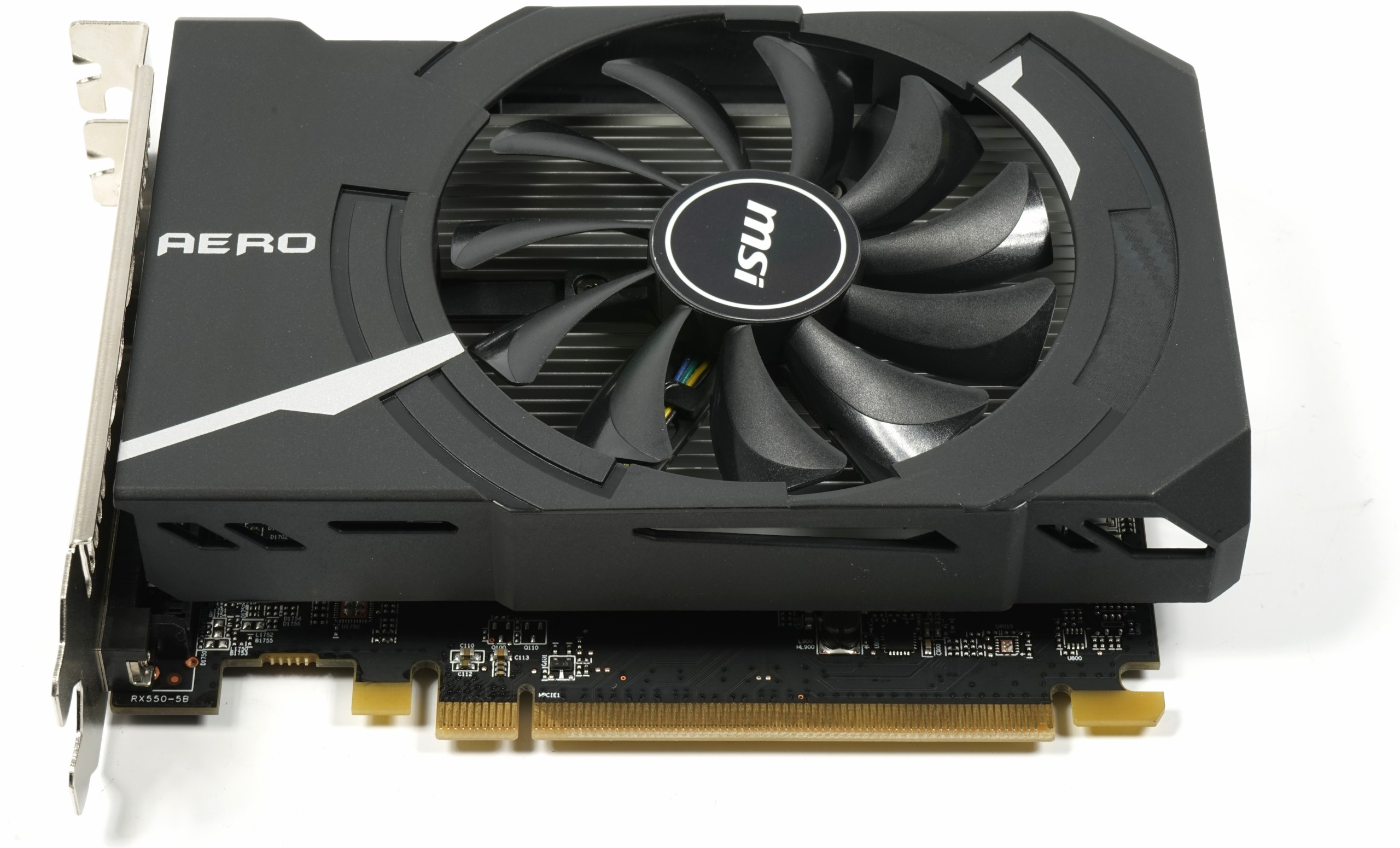
In review: MSI RX 550 Aero ITX 2GB
Since AMD could not provide its own reference maps, we use a copy of MSI. The MSI RX 550 Aero ITX comes to the customer with a slightly higher GPU clock speed of 1203 MHz, but nothing has changed with RAM. A semi-passive fan mode is in vain with the entry-level model, here simplicity, safety and of course a low price are in the foreground.
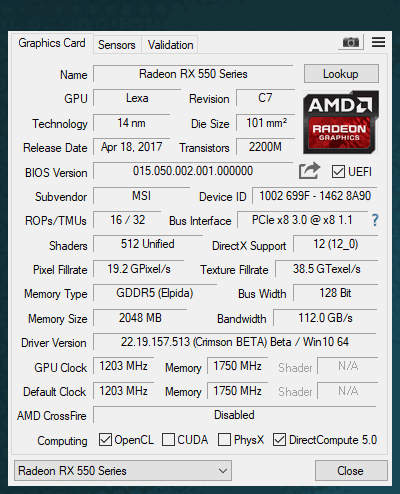
The slight ex-factory overclocking should hardly matter, especially since we are not sure whether the card can hold the boost clock at all due to the very low power limit (board power). But that's what we have this review and our test for.
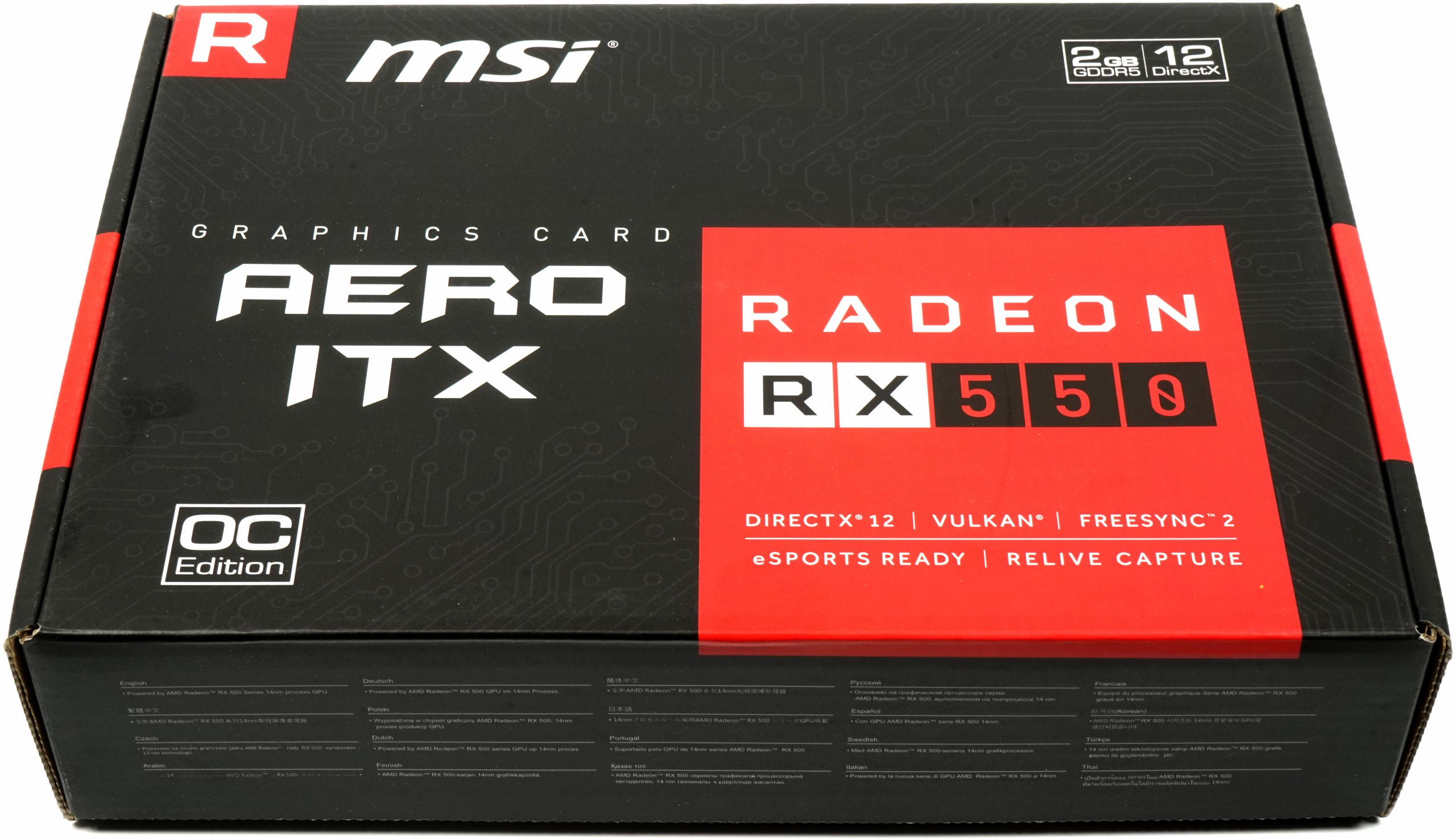
Test system and measurement methods
The new test system and the methodology have already been described in great detail in the basic article "How We Test Graphics Cards" (English: "How We Test Graphics Cards") and therefore, for the sake of simplicity, we now only refer to this detailed Description. So if you want to read everything again, you are welcome to do so.
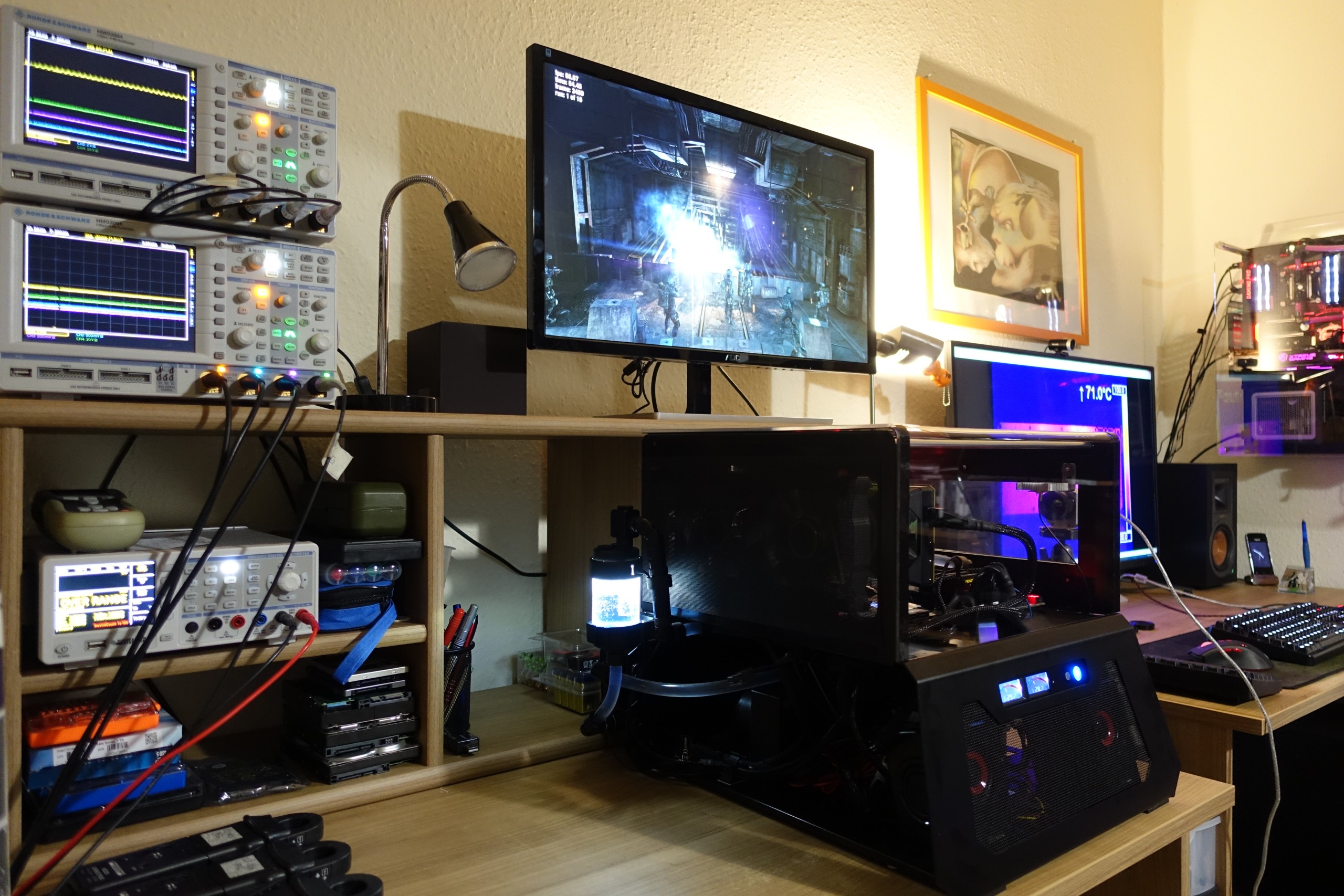
If you are interested, the summary in table form quickly provides a brief overview:
| Test systems and measuring rooms | |
|---|---|
| Hardware: |
Intel Core i3 6320 MSI Z270 Gaming Pro Carbon G.Skill F4-3200C14Q-32GTZ x 2400 MT/s 1x 1 TByte Toshiba OCZ RD400 (M.2, System SSD) 2x 960 GByte Toshiba OCZ TR150 (Storage, Images) Be Quiet Dark Power Pro 11, 850-watt power supply Windows 10 Pro (Creators Update) |
| Cooling: |
Noctua NH-D15 5x Be Quiet! Silent Wings 3 PWM Thermal Grizzly Kryonaut (for cooler change) |
| Housing: |
Lian Li PC-T70 with expansion kit and modifications Modes: Open Benchtable, Closed Case |
| Power consumption: |
non-contact DC measurement on the PCIe slot (Riser-Card) non-contact DC measurement on the external PCIe power supply Direct voltage measurement on the respective feeders and on the power supply 2x Rohde & Schwarz HMO 3054, 500 MHz multi-channel oscillograph with memory function 4x Rohde & Schwarz HZO50, current togor adapter (1 mA to 30 A, 100 KHz, DC) 4x Rohde & Schwarz HZ355, touch divider (10:1, 500 MHz) 1x Rohde & Schwarz HMC 8012, digital multimeter with storage function |
| Thermography: |
Optris PI640, infrared camera PI Connect evaluation software with profiles |
| Acoustics: |
NTI Audio M2211 (with calibration file) Steinberg UR12 (with phantom power for the microphones) Creative X7, Smaart v.7 own low-reflection measuring room, 3.5 x 1.8 x 2.2 m (LxTxH) Axial measurements, perpendicular to the center of the sound source(s), measuring distance 50 cm Noise in dBA (Slow) as RTA measurement Frequency spectrum as a graph |

































Kommentieren